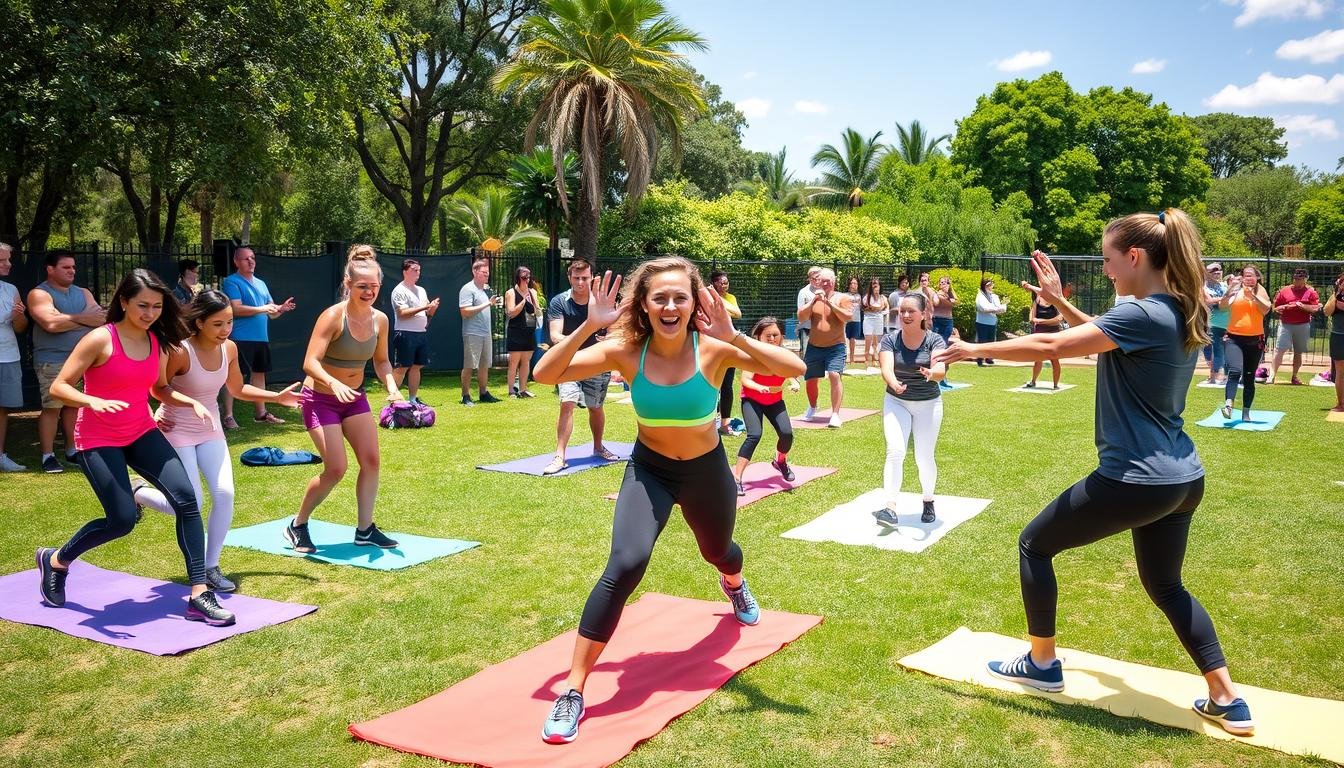Fitness challenges serve as potent motivators, engaging gym members and clients, while promoting healthful behaviors. They are instrumental in generating new leads, fostering referrals, driving sales, educating participants, and enhancing loyalty. Gyms can cater to a broad spectrum of fitness enthusiasts, from novices to seasoned athletes, through a variety of engaging workout challenges.
These challenges span numerous activities, including running, cycling, rowing, and strength training. Notable examples include 30-day plank challenges, 100 push-ups challenges, step challenges, and high-intensity interval training (HIIT) challenges. Utilizing platforms like Exercise.com enables gyms to manage and implement these challenges efficiently. Features such as leaderboards, custom workouts, and progress tracking are available to enhance the experience.
By offering a diverse array of workout challenges, gyms can motivate members to reach their fitness objectives. This approach fosters a sense of community, stimulates referrals, and opens up new revenue streams. The success hinges on tailoring challenges to meet the specific needs and preferences of the gym’s clientele, ensuring a rewarding and engaging workout experience.
Understanding the Benefits of Fitness Challenges
Fitness challenges present a plethora of advantages, encompassing both physical and mental realms. These meticulously designed workout regimens facilitate the attainment of fitness goals, enhance cardiovascular health, and stimulate calorie-burning exercises. Participation in such challenges also diminishes stress levels, elevates self-assurance, and augments overall well-being.
Physical and Mental Benefits
Engagement in fitness challenges fosters increased physical activity, which in turn mitigates symptoms of stress and anxiety. The liberation of endorphins during physical exertion contributes to an elevated mood and enhanced mental health. These challenges also promote the adoption of healthier lifestyles, including a more balanced diet and adequate hydration, further augmenting physical and mental prowess.
Social Engagement and Motivation
The incorporation of group participation and amicable competition in fitness challenges significantly boosts exercise motivation. The communal aspect of these endeavors enhances engagement, cultivating a sense of belonging and responsibility among participants. This collective support serves as a potent catalyst for achieving fitness objectives and sustaining a consistent exercise regimen.
Goal Setting and Achievement
Fitness challenges offer a structured framework for goal setting and achievement, facilitating the establishment of healthy habits and observable progress. With clearly defined start and end points, these challenges present a more enticing option compared to long-term fitness programs, appealing to individuals hesitant to commit to extensive workout regimens. By setting attainable goals and monitoring progress, fitness challenges empower participants to celebrate their achievements and maintain motivation throughout the journey.
Incorporating fitness challenges into one’s routine can yield a broad spectrum of benefits, ranging from enhanced physical health to improved mental well-being and social interaction. Whether it involves a 30-day plank challenge or a step challenge, these structured programs serve as invaluable tools in the pursuit of fitness goals and exercise motivation.
Popular High-Intensity Workout Challenges
Engaging in high-intensity workout challenges is a potent strategy for enhancing fitness and expediting caloric expenditure. These rigorous regimens typically amalgamate high-intensity workouts, calorie-burning exercises, and bodyweight training to expedite tangible outcomes.
The 30-Day Burpee Challenge exemplifies a notable option, incrementally escalating the daily count of burpees. This exercise, encompassing the entire body, intensifies cardiovascular activity. The 2-Week High-Intensity Interval Training (HIIT) Challenge, characterized by alternating intense exercise segments with brief recuperation intervals, sustains a perpetual caloric expenditure state.
| Challenge | Description | Benefits |
|---|---|---|
| 100 Push-ups Challenge | A challenge focused on building upper body strength through progressive push-up routines. | Improved chest, shoulder, and triceps muscle development, enhanced overall upper body strength. |
| 30-Day Mountain Climber Challenge | A high-intensity bodyweight exercise challenge that targets the core, shoulders, and legs. | Increased cardiovascular fitness, better balance and coordination, and stronger abdominal muscles. |
These challenges frequently integrate additional exercises such as jumping jacks, squats, and lunges, ensuring a holistic, full-body regimen. High-intensity challenges are notably effective in augmenting cardiovascular health, elevating metabolic rates, and fostering lean muscle development.
Fun and Engaging Workout Challenges for All Fitness Levels
Workout challenges can be tailored to accommodate fitness enthusiasts of all levels, ensuring inclusivity and broad participation. Whether you’re a beginner seeking to build a consistent exercise routine or an experienced athlete looking to push your limits, there’s a challenge to match your goals and interests.
Beginner-Friendly Challenges
For those new to fitness or looking to ramp up their activity levels, beginner-friendly challenges can provide a supportive and achievable starting point. Examples include a 30-Day Walking Challenge or a 5-Minute Daily Stretching Challenge, which focus on establishing consistency and developing basic fitness foundations.
Intermediate Level Challenges
As fitness levels improve, intermediate-level challenges can introduce more complex movements and higher intensities. A 30-Day Yoga Challenge or a 2-Week Kettlebell Challenge could be suitable options, allowing participants to explore new workout modalities and push their boundaries.
Advanced Fitness Challenges
For experienced athletes seeking to reach new heights, advanced fitness challenges can push the limits. A 100,000 Pound Lifting Challenge or a 1-Month Triathlon Training Challenge can challenge participants to exceed their personal bests and achieve remarkable feats of strength, endurance, and agility.
Many of these workout challenges can be adapted for at-home workouts or no-equipment routines, making them accessible to a wide range of participants. Incorporating workout variety is key to maintaining interest and targeting different aspects of fitness, ensuring a well-rounded approach to personal growth and achievement.
Step-Based and Walking Challenges for Daily Movement
Step-based and walking challenges are pivotal in fostering daily movement and enhancing overall health. The 10,000 Steps Daily Challenge, a widely recognized initiative, prompts individuals to attain a predefined step count daily. This can be monitored using smartphones or fitness trackers, seamlessly integrating into daily routines for all fitness levels. Initiatives can commence with 5,000 steps, incrementally increasing to 10,000 or more, catering to those with joint issues or novices in at-home workouts.
Integrating activities such as stair climbing or hiking into step challenges introduces variety and intensity, facilitating calorie-burning exercises. Flexible challenge durations, such as month-long initiatives, accommodate employees with hectic schedules, boosting participation. Customizing step goals and offering conversion formulas for alternative exercises enhances inclusivity, catering to the diverse needs of the workforce.
Step challenges have proven effective in uniting remote teams, as evidenced by numerous successful implementations across various organizations. Leveraging seasonal opportunities, like New Year’s resolutions or fall challenges, motivates participants to maintain activity levels throughout the year. This fosters employee engagement and well-being. With a plethora of virtual routes and customizable competition modes, step-based challenges offer a rewarding and engaging experience for all participants.





